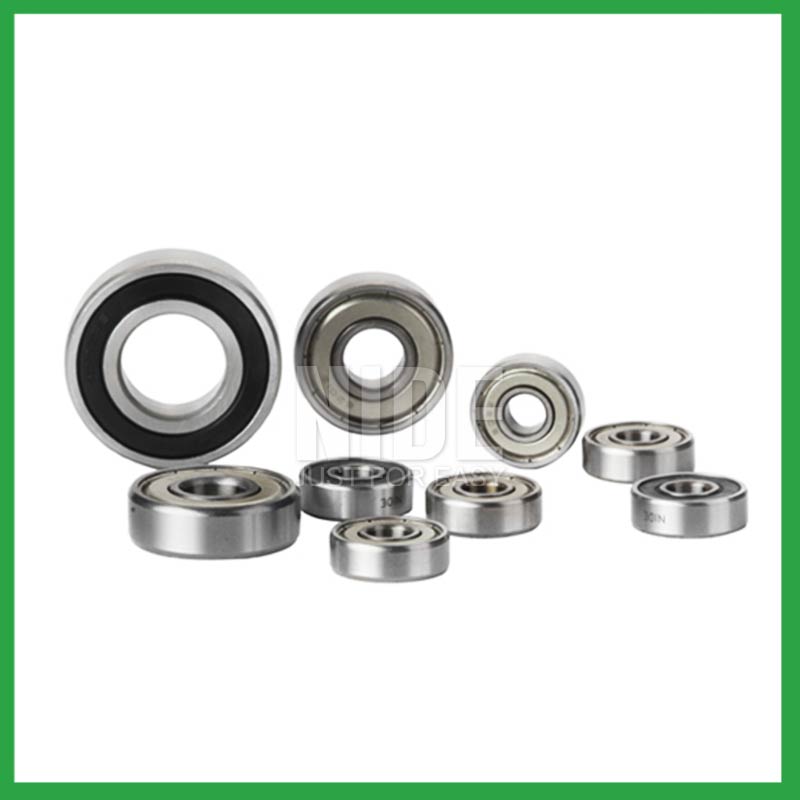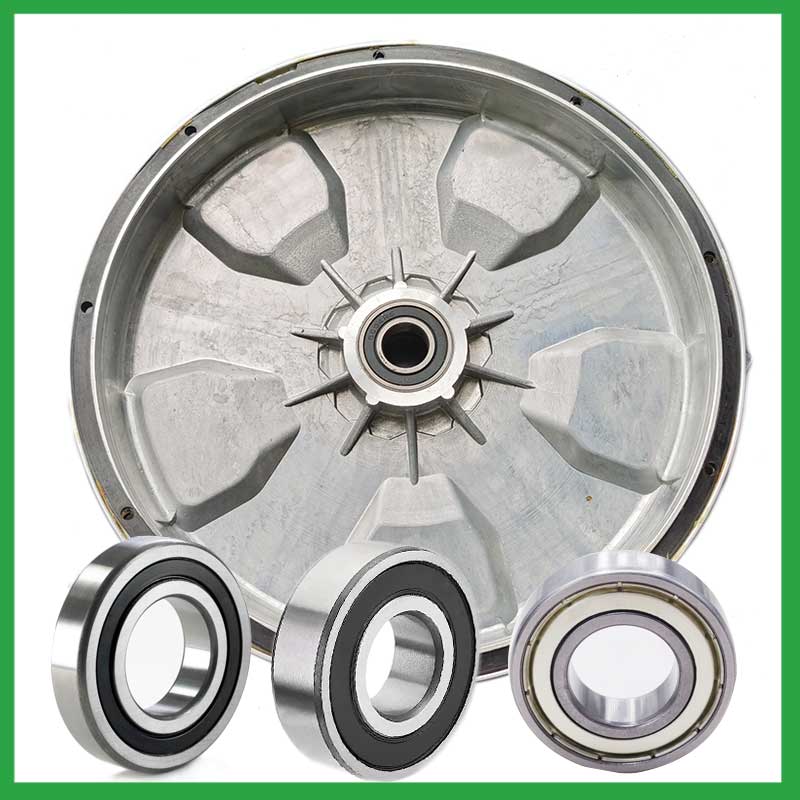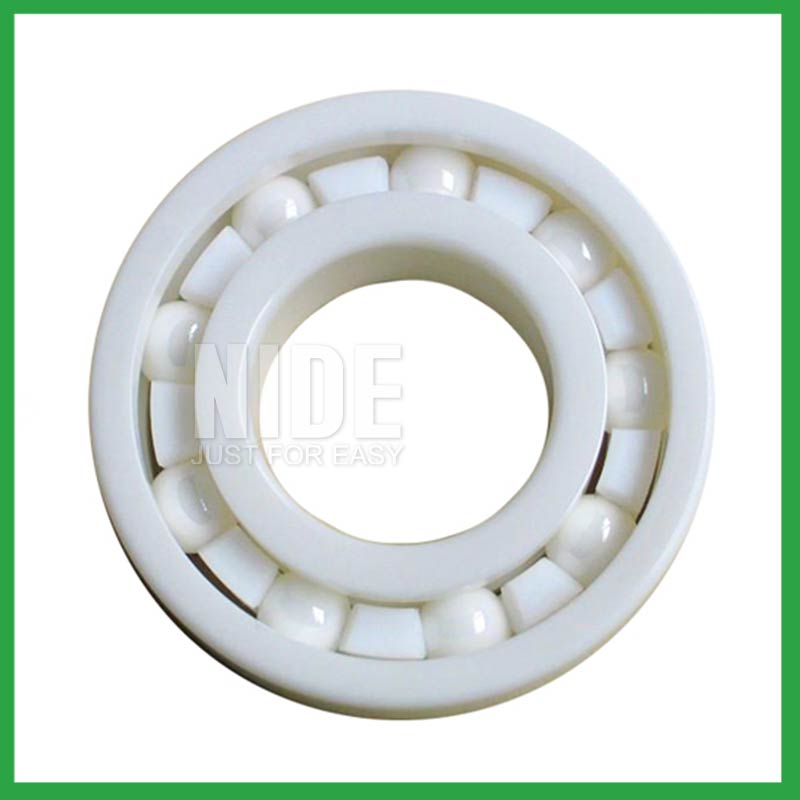PRODUCTS
CONTACT US
Ningbo Nide International Co., Ltd.
一一
· Contact person:Jack Zeng
· Mob/Whatspp/WeChat:0086-13738869026
· Email:emarketing@nide-group.com;marketing4@nide-group.com
· Add:No. 169, Wohushan Road, Daqi Subdistrict, Beilun District, Ningbo, China

Nide team could manufacture ball bearing as per customer’s drawing and samples.
If customer only has samples, we could also design drawing fo r our customer.
We also provide customized service.
Our ball bearing is widely applied the different industrials.
Ningbo Haishu Nide International Co., Ltd is located in Ningbo City, Zhejiang Province. It is a high-tech enterprise that integrates research and development, application, production, and sales. Mainly producing high-performance commutator,fan,carbon brush,motor cover and lamination,ball bearing,shaft,insulation paper, etc. The product has a series of characteristics such as oil-free self-lubricating, wear resistance, corrosion and rust resistance, acid, alkali, salt and gas corrosion resistance, no magnetic and electrical insulation, high temperature and cold resistance, light weight, etc. It is widely used in industries such as washing machine motor,servo motor,single and three phase induction motor,compress motor,electric bicycle motor,electric automotive motor,water pump motor.
By ceaselessly improve our quality and, our products win high praise for our favorable price, excellent service and timely delivery. No matter before or after sales, from quality to price, we have the complete and professional management system.

| Parameter | Information |
| Product Name | ball bearing test rig |
| Place of Origin | Ningbo,China |
| Brand Name | Nide |
| Material | stainless steel, etc. |
| Type | Ball |
| Warranty | 3months-1year |
| Port | Ningbo/Shanghai |
| Application | automotive engines, etc. |
| Size(mm) | customize |
| Color | gray+customized |
| Precision Rating | as per customer's requirement |
| Certification | ISO 9001 Certification,ISO9001:2015 certificate,CE-insulation paper inserting machine,etc |
| Feature | Good wear resistance,High precision...etc |
| Packaging Details | Suitable for sea transportation |
| Service | one-stop service |
| Model Number | ball bearing |
| Supply Ability | 100000-500000 Piece/Pieces per Month |
| Lead time (days) | 15-20 (To be negotiated) |
Please note: The above table data is for reference only. For specific information, please contact us.
The precision range of ball bearing test rig is from ABEC7 to ABEC9, with a particle size of 0.3 μ m. Among them, ABEC9's ball bearings have the best precision range and are widely used in the electronics industry, precision measurement industry, and so on.
During the disassembly process, the outer shell should be kept intact to avoid unnecessary damage;
When replacing installation components, attention should be paid to the accuracy of the support components to prevent deformation;
During the disassembly process, attention should be paid to protecting the surface quality of the ball bearing to ensure its performance;
During the operation, attention should be paid to removing surface dust to ensure the quality of the ball bearing.
Ball bearings have many advantages, making them highly competitive in the market.
Firstly, they are very durable and have good wear performance, making their service life longer than many other types of bearings.
Secondly, they are easy to install and can provide low friction performance in various applications.
Thirdly, they require a relatively low level of maintenance, making them cost-effective.
In addition, compared to many other types of bearings, their purchase cost is relatively low, making them an economical choice.




ball bearing test rig---FAQs Guide
2.Can ball bearing test rig operate in high-speed applications, and what design features make them suitable for such conditions?
3.As a ball bearing test rig manufacturer,What is your payment method?
4.Do ball bearing test rig come in various tolerance classes?
5.How do preloaded ball bearing test rig enhance rigidity and reduce clearance in high-precision applications?
6.What is the production capacity of the factory for ball bearing test rig?
7.What is the load distribution within a ball bearing test rig, and how does it vary between different bearing configurations?
8.Are there ball bearing test rig designed for use in critical medical equipment?
9.How do manufacturers ensure the quality and reliability of ball bearing test rig through material selection and precision machining?
10.How do manufacturers address concerns related to bearing noise and vibration in sensitive equipment?
11.What is the significance of ball bearing test rig lubrication, and how does it affect bearing lifespan and performance?
12.What is the typical noise level associated with ball bearing test rig, and how are noise-reduction techniques applied?
1.Can ball bearing test rig be customized with special coatings or treatments to meet specific industry standards or regulatory requirements?
Yes, ball bearing test rig can be customized with special coatings or treatments to meet specific industry standards or regulatory requirements.
1. Corrosion-resistant coatings: These coatings are used to protect the bearings from corrosion caused by exposure to moisture, chemicals, and other corrosive substances.
2. High-temperature coatings: These coatings are used to improve the thermal stability and performance of bearings in high-temperature environments.
3. Food-grade coatings: These coatings are specially designed for applications in the food and beverage industry, where bearings come into contact with food, beverage, or pharmaceutical products.
4. Anti-static and non-conductive coatings: These coatings are used to dissipate static electricity, which can cause damage to electronic components.
5. Specialized lubrication treatments: Bearings can be treated with specialized lubricants that meet specific industry standards or regulatory requirements.
2.Can ball bearing test rig operate in high-speed applications, and what design features make them suitable for such conditions?
They have very low rolling friction and are optimized for low noise and low vibration. This makes them ideal for high-speed applications. ball bearing test rig are comparatively easy to install and require minimal maintenance.
3.As a ball bearing test rig manufacturer,What is your payment method?
We accept T/T, PAYPAL or Western Union, credit card or via ALIBABA Assurance order.
4.Do ball bearing test rig come in various tolerance classes?
Bearing tolerances are standardized by classifying bearings into the following six classes (accuracy in tolerances becomes higher in the order described): 0, 6X, 6, 5, 4 and 2.
5.How do preloaded ball bearing test rig enhance rigidity and reduce clearance in high-precision applications?
Enhance Rigidity: By applying a controlled axial force, preload increases the bearing's resistance to external forces and moments. This heightened rigidity is essential in applications where any deflection or misalignment must be minimized, such as in machine tools or robotic systems.

6.What is the production capacity of the factory for ball bearing test rig?
The production capacity of Ningbo Haishu Nide International is:50000000pcs/month
7.What is the load distribution within a ball bearing test rig, and how does it vary between different bearing configurations?
The load distribution between the rolling elements and raceway is crucial in performance evaluation of rolling element bearings. Determine the load distribution by measuring the strain response at the bearing surface with a notched housing. Finite element analysis shows that the introduction of notches does not affect the load distribution. An experimental system was developed to investigate the load distribution in a cylindrical roller bearing. The experimental static load distribution agrees well with the theoretical calculation. The dynamic load at specific position of load zone reflects the manufacture difference among rollers and dynamic balance of distributing loads.
8.Are there ball bearing test rig designed for use in critical medical equipment?
Precision ball bearing test rig are among critical components in medical devices that are vital to ensuring patient safety. Correct choice of suitable ball and ring materials and the right product design can ensure high-precision bearings — and medical devices — have a long service life.
Precision bearings are used in a wide variety of medical devices including surgical power tools, ventilators and heart pumps — and patient safety depends on them all. Whatever the device, there is an onus on medical device original equipment manufacturers (OEMs) to ensure that the right type of bearings are chosen, and fit precisely into the application.
9.How do manufacturers ensure the quality and reliability of ball bearing test rig through material selection and precision machining?
High-precision measuring instruments, such as micrometers and gauges, are used to check the dimensions of the rings and balls to ensure they meet tight tolerances. Surface Finish Inspection: Surface finish is assessed using profilometers to ensure the required smoothness and low friction characteristics.
10.How do manufacturers address concerns related to bearing noise and vibration in sensitive equipment?
From a ball bearing test rig manufacturing perspective, a low noise or vibration rating is achieved by paying attention to the surface finish of the raceways and balls, their roundness, and selecting the correct cage design. Finely filtered low noise greases can also be used to reduce vibrations.

11.What is the significance of ball bearing test rig lubrication, and how does it affect bearing lifespan and performance?
Bearing lubrication is vital for preserving the performance and lifespan of rolling element bearings. Lubrication helps separate moving parts relative to one another, such as rollers and raceways or balls, to prevent wear and tear and friction.
12.What is the typical noise level associated with ball bearing test rig, and how are noise-reduction techniques applied?
To measure in accurate way the ball bearing test rig noise under rotation during their manufacturing process is a key activity particularly in the production of medium, small and ultra-small deep groove ball bearings. This capability in bearings noise analysis has become the real distinguishing element between a standard bearings noise equipment and a superior class one.
The various types of vibration and sound in rolling bearings can be grouped in four main categories: structural, manufacturing, handling and other. The structural vibration consists mostly of race, click, squeal and cage noise: it can be continuous or intermittent depending on specific cases. The manufacturing vibration is instead related to the waviness noise generated by the geometrical imperfections of inner and outer ring and of rolling elements, being always continuous in nature. The so-called handling vibration is normally associated with flaw and contamination and is generating – in most of the cases – irregular noise. Then there are other types of vibrabition that include noise generated by sealing and lubricant (irregular) or by runout (continuous).

